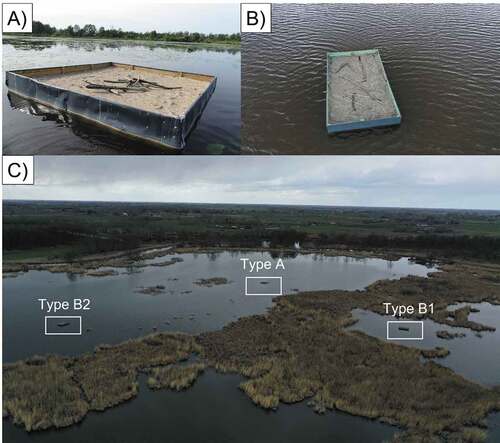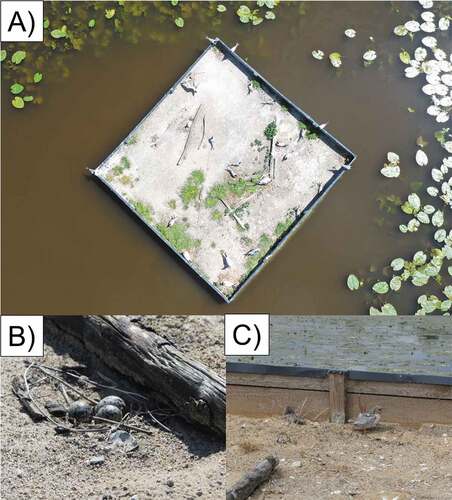Figures & data
Figure 1. Nesting floating platforms, A (A), and B (B), and general view of all platforms location (C) in the Druzno Lake reserve (photos by authors).

Figure 2. Nesting floating platform A with adults on nests (A), eggs (B) and chicks (1–2-week-old) (C) of the common tern in 2019 (photo by authors).

Figure 3. The population dynamics of common terns breeding in the Druzno Lake reserve in 1999–2021. No data available for 2003 [indicated with X in the graph]. The red arrow indicates the construction of a one floating platform Type A, the purple arrow – two platforms Type B, for common terns bars indicate number of pairs, dots number of colonies.
![Figure 3. The population dynamics of common terns breeding in the Druzno Lake reserve in 1999–2021. No data available for 2003 [indicated with X in the graph]. The red arrow indicates the construction of a one floating platform Type A, the purple arrow – two platforms Type B, for common terns bars indicate number of pairs, dots number of colonies.](/cms/asset/c079b6c8-9cee-416e-a0cd-0b0243720643/tizo_a_2038709_f0003_oc.jpg)
Table I. The number and density of nests, mean clutch size and breeding success in 2017–2021 on the three nesting floating platforms in Druzno Lake reserve
Table II. Recommendations for constructing and placing nest platforms for common terns
